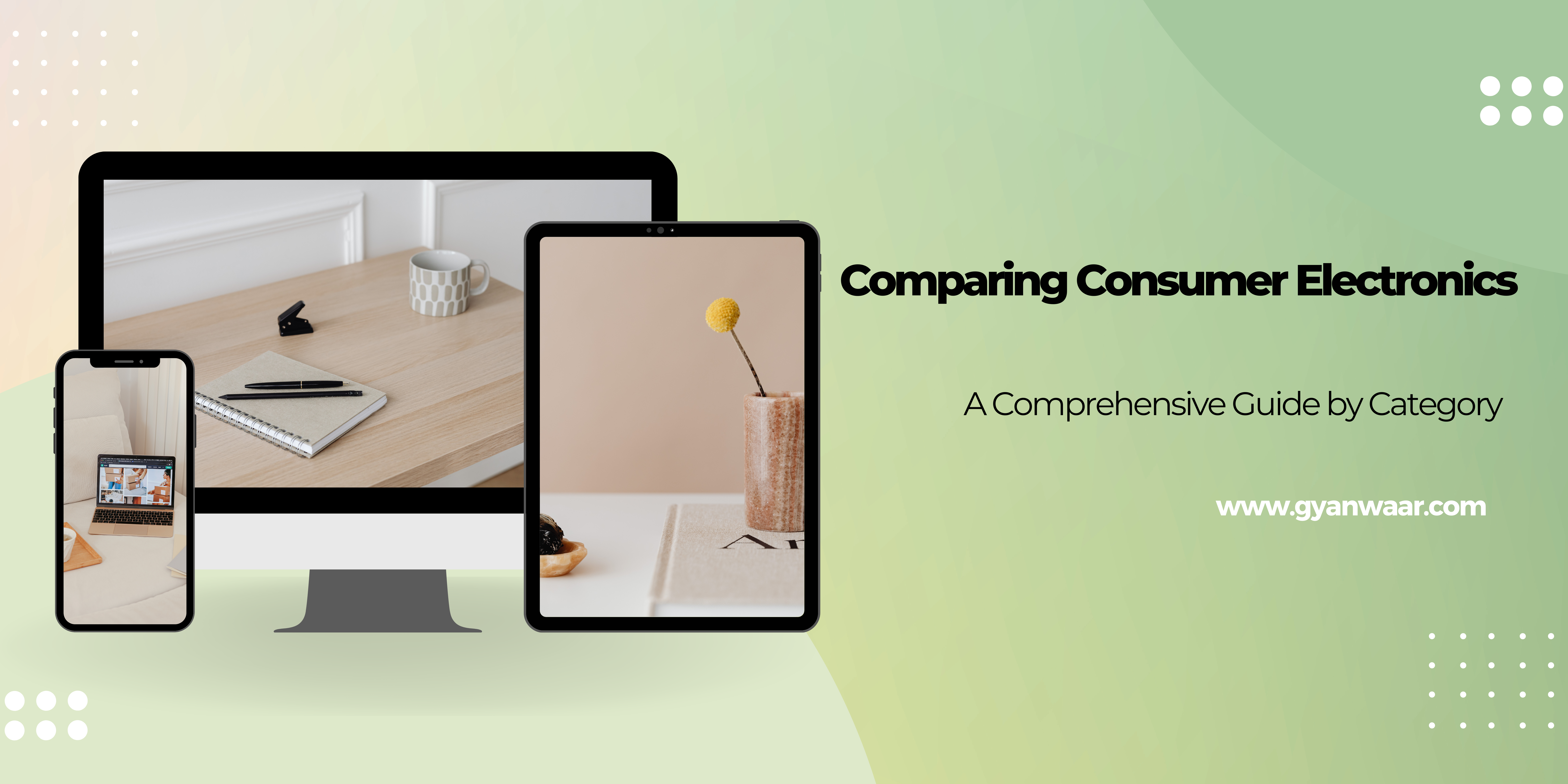Comparing Consumer Electronics: A Comprehensive Guide by Category
Consumer electronics have become an integral part of modern life, offering convenience, entertainment, and connectivity. With a wide array of products available in the market, consumers often find themselves confronted with choices that can be overwhelming. To help navigate this landscape, let’s delve into the various categories of consumer electronics and compare them based on key factors such as functionality, features, price, and popularity.
1. Smartphones:
Smartphones have evolved beyond mere communication devices to become multifunctional gadgets essential for daily tasks, entertainment, and productivity. When comparing smartphones, consider factors such as:
- Operating System: iOS (Apple), Android (Google), or others.
- Display: Size, resolution, and technology (LCD, OLED, AMOLED).
- Camera: Megapixels, lens quality, and additional features like optical image stabilization (OIS) and night mode.
- Performance: Processor, RAM, and storage capacity.
- Battery Life: Capacity and endurance under typical usage scenarios.
- Price: Affordability based on budget and desired features.
Popular brands like Apple, Samsung, Google, and OnePlus offer a range of smartphones catering to different consumer preferences and budgets.
2. Laptops and PCs:
Laptops and personal computers remain indispensable tools for work, education, and entertainment. When comparing these devices, consider:
- Form Factor: Traditional clamshell laptops, 2-in-1 convertibles, or desktop towers.
- Operating System: Windows, macOS, Chrome OS, or Linux.
- Performance: Processor (CPU), graphics (GPU), RAM, and storage (SSD or HDD).
- Display: Size, resolution, panel type (IPS, TN, OLED), and touch capability.
- Portability: Weight, thickness, and battery life.
- Price: Value proposition based on performance and brand.
Popular laptop brands include Apple (MacBook), Dell, HP, Lenovo, and Microsoft, each offering a diverse lineup to suit various user needs.
3. Televisions:
Televisions remain the centerpiece of home entertainment, offering immersive viewing experiences for movies, sports, and gaming. When comparing TVs, consider:
- Display Technology: LED, OLED, QLED, or MicroLED.
- Resolution: Full HD (1080p), 4K Ultra HD, or 8K.
- Size: Screen diagonal measured in inches.
- HDR Support: High Dynamic Range for enhanced contrast and color.
- Smart Features: Built-in streaming apps, voice control, and connectivity options.
- Price: Affordability based on size and features.
Leading TV brands such as Samsung, LG, Sony, TCL, and Hisense offer a wide range of models with varying features and price points to cater to diverse consumer preferences.
4. Wearable Devices:
Wearable devices have gained popularity for their ability to track fitness, monitor health, and provide on-the-go connectivity. When comparing wearables, consider:
- Form Factor: Smartwatches, fitness trackers, or smart glasses.
- Health Tracking: Heart rate monitoring, sleep tracking, and activity recognition.
- Connectivity: Bluetooth, Wi-Fi, and cellular (LTE) capabilities.
- Battery Life: Endurance under typical usage and charging methods.
- Compatibility: Compatibility with smartphones and ecosystem integration.
- Price: Value proposition based on features and brand.
Leading wearable brands include Apple (Apple Watch), Fitbit, Garmin, Samsung, and Xiaomi, each offering a diverse range of products to suit different lifestyle needs.
5. Audio Devices:
Audio devices encompass a wide range of products, including headphones, earphones, speakers, and soundbars, catering to various audio preferences and usage scenarios. When comparing audio devices, consider:
- Form Factor: Over-ear headphones, in-ear earbuds, or portable speakers.
- Sound Quality: Frequency response, driver size, and audio codecs supported.
- Connectivity: Wired (3.5mm jack) or wireless (Bluetooth, Wi-Fi).
- Noise Cancellation: Active noise cancellation (ANC) for immersive listening experiences.
- Battery Life: Endurance for wireless devices and charging options.
- Price: Affordability based on audio quality and brand reputation.
Popular audio brands such as Apple (AirPods), Bose, Sony, Sennheiser, and JBL offer a diverse lineup of products catering to audiophiles, casual listeners, and outdoor enthusiasts.
In conclusion, comparing consumer electronics by category involves evaluating various factors such as functionality, features, price, and brand reputation to make informed purchasing decisions. Whether you’re in the market for a smartphone, laptop, TV, wearable device, or audio equipment, understanding these considerations will help you find the right product that meets your needs and budget.
We have shared about “Comparing Consumer Electronics: A Comprehensive Guide” in this post. Find More related posts in e-Commerce & Shopping category. For more please don’t forget to follow us on social media platforms Twitter, Facebook, Linkedin, Instagram and get latest updates.
